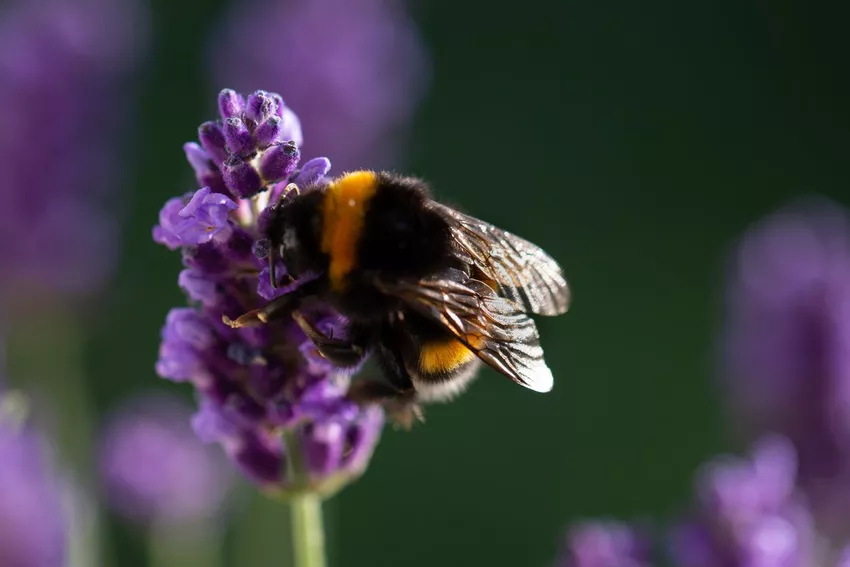Pollination of different plants can work very differently - as wind pollination or insect pollination for example. You can find out more about cross-pollination and self-pollination here.

How was that again with the bees and the flowers? Many people have long since forgotten their biology lessons at school and do not know how plants actually reproduce. So here comes the little, innocent enlightenment about wind pollinators, animal blood, self- and cross-pollination. Because the plants love each other in many different ways.
What is pollination?
The process of transferring pollen to the stigma or ovule is called pollination. Here, as in humans, two halved genes come very close: one is in the male pollen, one in the female ovary. If everything goes well, the pollen germinates, grows through the flower's style with its pollen tube over several days and finally reaches the so-called embryo sac cell. This is where the two cells fuse and the genetic material they contain is combined.
What types of pollination are there?
There are two possible answers to the question of which pollen can fertilize a plant: self-pollination and cross-pollination.
Self Pollination
In self-pollinators, the combination of ovary and pollen from the same plant can lead to ovules. This has the advantage that an entire colony can quickly develop from just a few individuals. Pioneer plants are therefore often among the self-pollinators.
Examples of self-pollination: Lesser snowdrop (Galanthus nivalis), barley ( Hordeum vulgare), Beans (Phaseolus vulgaris), Peas (Pisum sativum)

Cross-pollination
Cross-pollinators cannot fertilize themselves: pollen and ovaries must come from different individuals of a species in order for fertilization to occur. This has the advantage that the genetic variability and thus theThe adaptability of these plants is very high.
Examples of cross-pollination: Primroses (Primula), loosestrife (Lythrum salicaria ), Wood Sorrel (Oxalidaceae), Irises (Iris), Sage (Salvia ), corn (Zea mays)
Some plants tend to self-pollinate, others to cross-pollinate - some can do both equally. However, cross-pollination is the far more common case. Incidentally, whether a plant is self-pollinating or cross-pollinating says nothing about whether it is pollinated by insects, the wind, bats, birds or even water: all combinations are possible. Most plants are very effective at preventing self-pollination. Because cross-pollinators have the advantage that the sexual recombination with the genetic material of another plant results in a profitable mixing of the properties. This may enable the offspring of the plants to adapt to new environmental conditions.
Expert Tip: In nature, there are various mechanisms that ensure that a plant does not pollinate itself: for example, different flowering times for male and female flowers on a plant, as in the hazelnut (Corylus avellana). Or the flowers of different individuals are structured in such a way that a pollinating insect always first scrapes off the pollen of another plant on the stigma before it can get to the pollen. Enzymatic self-sterility is also possible: the pollen is either prevented from germinating or the pollen tube is stopped in the style by specialized enzymes before it reaches the ovary. You can find out more about the peculiarities of the flowers of monoecious, dioecious and hermaphrodite plants in our special article.

Insect Pollination
Many plants depend on insects for pollination. This is also called “insect bloom”. The term becomes clear when you look at the flowers of these plants: all insect-pollinated plants have brightly colored, strongly fragrant, or otherwise insect-attractive flowers. Incidentally, many plants are specialized on "their" pollinators - and the same applies the other way around: flower shape and depth, nectar composition, flight height and distance of the insects, time of flowering and hatching of the insect larvae are precisely coordinated. Bee pollination is certainly known to everyone. But also butterflies, flies, moths and many othersare important pollinators. These little beneficial insects can be supported with insect-friendly seed mixtures such as the Plantura Bee Pasture, the Plantura Butterfly Club or the Plantura Beneficial Magnet.
Examples of insect pollination: Fruit trees such as apple ( Malus), Pear (Pyrus) and Cherry (Prunus), Lungwort (Pulmonaria ), Arum (Arum), Linden (Tilia), Chestnut (Aesculus), Meadow clover ( Trifolium pratense).
Wind Pollination
Wind pollination in plants is considered to be the archetype of pollination. In primeval forests, pollen was carried from plant to plant solely by the wind. Wind pollinators can be recognized by their long, hanging catkins. The pollen dusts out of it when it is windy and thus reaches the inconspicuous female flowers. These are not noticeable at first glance: often only so-called scar branches are formed, on which the pollen can land. Petals or similar ornaments are absent.
Examples of wind pollination: Hazelnut (Corylus avellana), Willow (Salix ), Alders (Alnus), Birches (Betula)
For more information on bee pollination, see our special article.